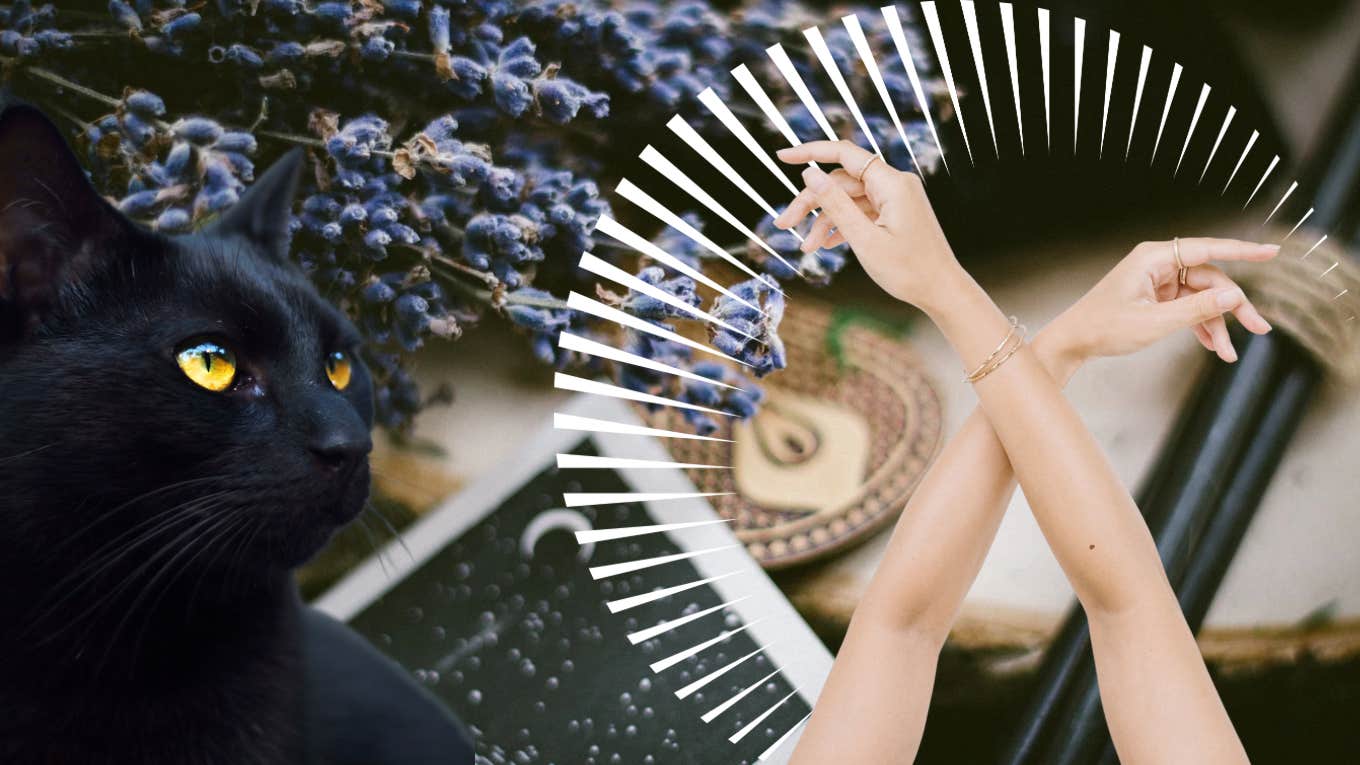The Spooky Beauty Mark Quiz That Could Tell You If You Come From A Line Of Witches
Witches of the world, raise your broomsticks.

As the months slip from summer to fall, our days grow darker and shorter and we welcome the onset of that most wonderful time of the year — Spooky Season. Carved pumpkins appear on porches and wispy cotton strands that look like spiderwebs are draped over trees. For some people, the buildup to Halloween is even more meaningful, due to one specific piece of folklore.
There’s a spooky beauty mark quiz that might tell whether you come from a line of witches.
If you travel through the realm of TikTok to WitchTok, you’ll find posts on the various ways to know if you are a witch. Some posts rely on palmistry, the study of marks on the palms of a person’s hands, to determine if someone has healing marks, also known as witches' marks. Yet apparently, there’s an even easier test to uncover if your ancestry is rooted in witchcraft.
According to the TikTok account @rainbowmoonreadings, women can look at their beauty marks to know if they come from a witchy lineage. One particular post instructs women to look at their forearms, where the presence of a beauty mark in one certain spot means that they are, in fact, a witch.
The beauty mark test for witches made its way to Instagram, where one astrology account called @cancer.horoscope0 reposted the TikTok test. The post brewed over 365,000 comments, many coming from women who noticed a mark on their arms.
“So how do I unleash my powers?” Asked one woman who found the mark. Another woman with the witch's mark asked, “Where are you, my fellow sisters?”
While most people have freckles, moles, or beauty marks on some part of their body, there is historic precedence surrounding the idea that witches have special markings.
According to a website focused on the history of Massachusetts, the concept of witch’s marks gained traction during early 16th-century witch hunts. They were defined as marks on a person's skin that proved they were a witch, as the mark was said to be evidence of a pact made with the Devil. An anonymously written book from 1645 defined witch’s marks as “a blue-spot, or red-spot, like a flea-biting.”
Witches were also said to be marked with a witch’s teat that their families nursed from. As a result of this lore, one popular tactic of witch-hunting was stripping the accused witch down and searching their naked body for the mark.
There are other ways to find out if you're descended from witches, stemming less from body-based markings and more from historical record-keeping.
A 2016 press release from the Wellcome Library in London announced the presence of a digitally-archived, 350-year-old manuscript called MS3658, also titled Names of Witches in Scotland, 1658. The manuscript is a ledger dating from 1658 to 1662 that lists the full names of accused witches in various towns and provinces in Scotland. Accompanying certain names are details of alleged confessions, which were most likely received by committing torture.
 Photo: Anete Lusina / Pexels
Photo: Anete Lusina / Pexels
An article from Smithsonian Magazine reported that following the Scottish Witchcraft Act of 1563, which made witchcraft a crime punishable by death, 3,000 to 5,000 people were openly accused of witchcraft during the 16th and 17th centuries. 84 percent of accused witches were women, and about 65 percent were over the age of 40. Around 64 percent of those accused were from what would now be called the middle class.
The Witchcraft Act was repealed in 1736, but not before thousands of people were killed after being accused of harboring otherworldly powers.
The history of witchcraft around the world is complex and deep-seated.
Witches, or people thought to be witches were persecuted in massive numbers. Not everyone believes in magic, yet those who do can peek down at their arms to see if they’re descended from witchy ancestors, just in time for Halloween.
Alexandra Blogier is a writer on YourTango's news and entertainment team. She covers social trends, pop culture analysis and all things to do with the entertainment industry.

